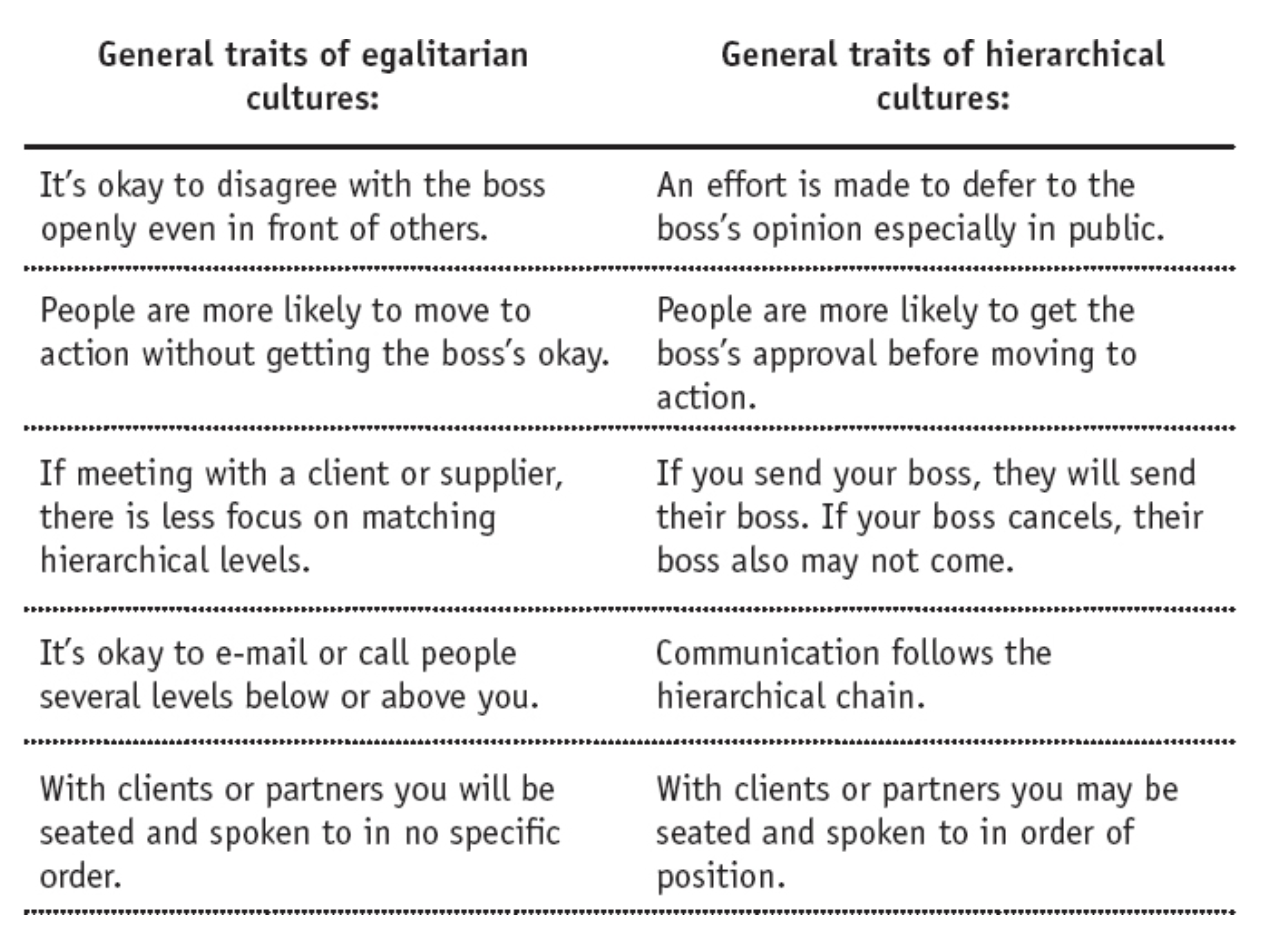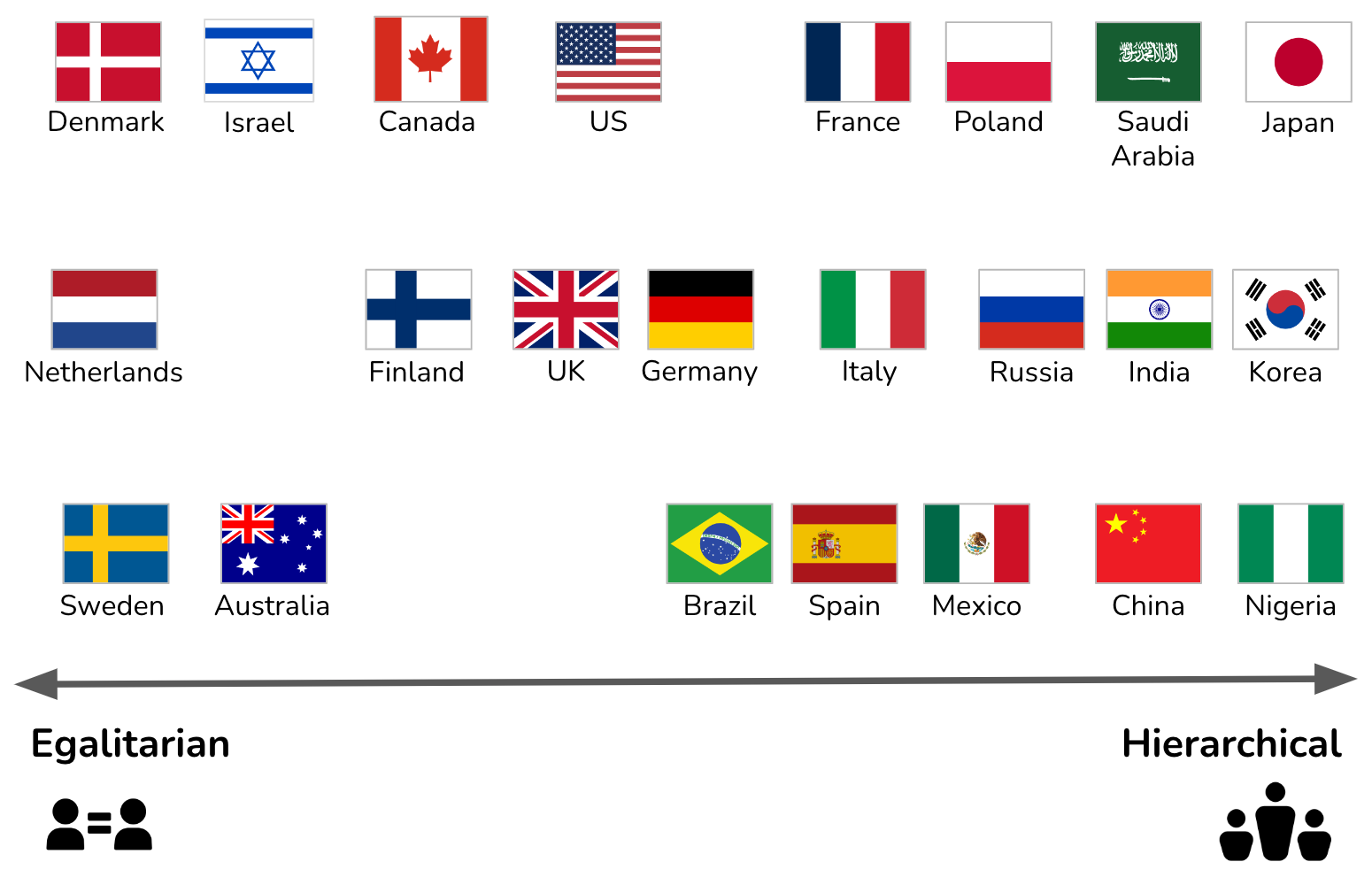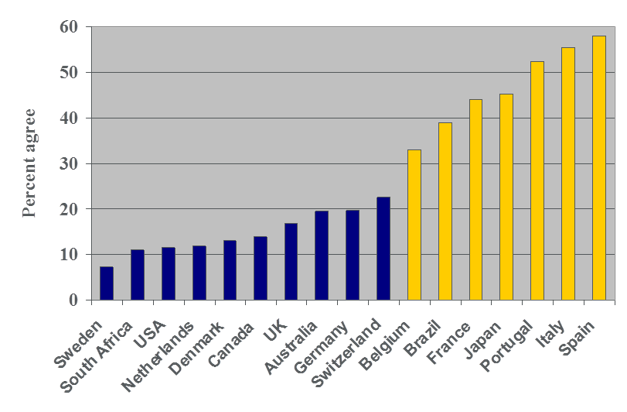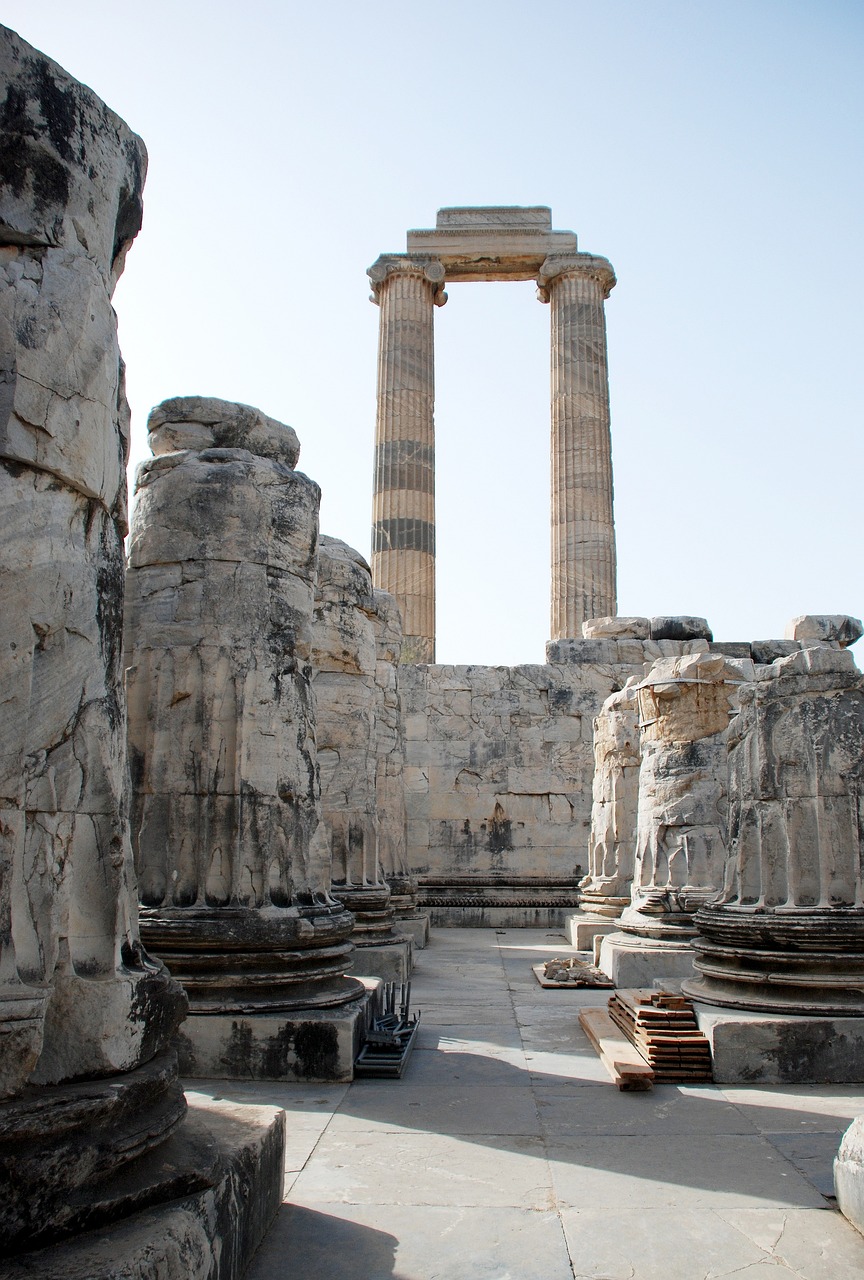Cultural Dimensions
LEADING
How Different Cultures View Leadership, Hierarchy and Power

Answer the following questions quickly without giving them much thought.
– Do you expect a boss to wear an Armani suit or khaki trousers with jogging shoes?
– Should she travel to work on a mountain bike or in a limousine?
– Do you call him “Mr. Director,” or are you more likely to address him as “Sam”?
How you respond to these questions depends on your individual personality. It also may reflect the country you come from.
The leading scale measures the degree of respect and deference shown to authority figures.
This scale places countries on a spectrum from egalitarian to hierarchical. Egalitarian cultures expect leading to be in a democratic fashion. Hierarchical cultures expect leading to be from top to bottom (Eiffel tower structure)
Key Characteristics
|
EGALITARIAN |
HIERARCHICAL |
|
|

CGENERAL TRAITS OF EACH LEADERSHIP STYLE
The chart shows examples of where certain countries fall on the leadership scale.

COUNTRY COMPARISON
The chart shows examples of where certain countries fall on the leadership scale.

ANDRE LAURENT’S STUDY
An interesting study done by Professor André Laurent from the Business School INSEAD asked the following question to hundreds of European managers:
« Is it important for a manager to have at hand precise answers to most of the questions that subordinates may raise about their work? »
While 55% of Italians that were polled said that it is indeed important for the boss to have most of the answers, only 7% of Swedes thought the same way.
In the following video, Erin Meyer is discussing how leadership styles are different in cultures around the world and how to lead a successful international team.
HISTORICAL ROOTS OF THIS DIMENSION
– Role of Roman Empire in Southern Europe: the Romans built hierarchical social and political structures and heavily centralized systems for managing their vast empire. Later, the catholic church set up the same type of hierarchical system.
– The Protestant Reformation largely removed the traditional hierarchy from the church. Individuals speak directly to God, instead of speaking to God through the priest, the bishop and the pope, as it is the case in Catholicism. Societies dominated by Protestantism are very often more egalitarian tha those dominated by Catholicism.
– In Northern Europe, by contrast, the Vikings were surprisingly egalitarian. When settling to Iceland, they founded one of the world’s early democracies, with a debating hall in which everybody could give his opinion and vote.

Get in Touch With Us

